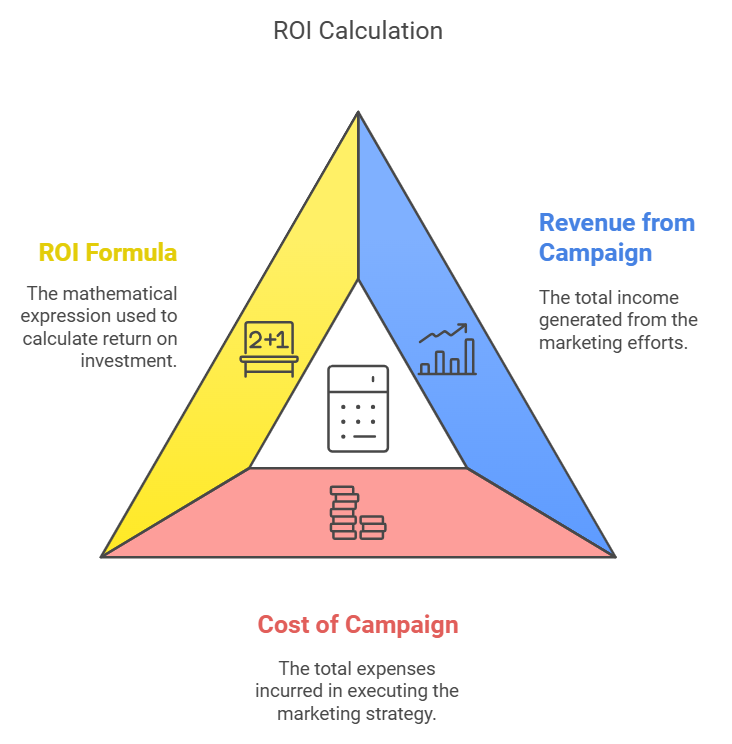Custom WordPress Development (2025 Definitive Guide)
Build a unique, high-performance website with our 2025 guide to custom WordPress development. Learn advanced tactics.

Learn proven strategies to improve your growth marketing ROI, optimize campaigns, and maximize business success effectively.
In today’s fast-paced, highly competitive digital landscape, businesses are continually looking for ways to maximize their marketing efforts and get the most bang for their buck.
Growth marketing, a strategy focused on attracting and retaining customers, plays a pivotal role in helping companies achieve long-term success. However, without a keen focus on Return on Investment (ROI), even the most robust growth marketing strategies can fall short.
This blog will guide you through proven strategies for improving growth marketing ROI, providing actionable insights that you can start applying right away.
Growth marketing ROI refers to the measure of revenue generated from growth marketing efforts compared to the costs incurred. Essentially, it’s about determining how much money your marketing initiatives bring back to the business. Without calculating ROI, it’s impossible to know whether your campaigns are profitable or not.
ROI serves as a key indicator of your marketing strategy’s efficiency. A high ROI signifies that your marketing dollars are working harder, delivering better results, and driving more revenue for the business.
ROI is more than just a number—it’s a reflection of how effectively your growth marketing strategies are driving business success. A high ROI shows that your marketing campaigns resonate with your target audience, while a low ROI can signal the need for refinement in your approach.
Growth marketing is all about experimentation and scalability, so tracking ROI ensures that you’re spending wisely and scaling the right efforts. It also helps you justify marketing budgets to stakeholders, ensuring continued investment in the strategies that are working.
To calculate growth marketing ROI accurately, you need to focus on key metrics such as:
These metrics will help you understand the efficiency of your marketing campaigns and identify areas where improvements are needed.
It’s essential to ensure that the metrics you track align with your business goals. For example, if your goal is to increase customer retention, your focus should be on measuring customer lifetime value rather than just conversion rates. Aligning metrics with objectives helps in making data-driven decisions that improve both marketing efficiency and overall ROI.
One of the simplest ways to improve growth marketing ROI is to set clear and measurable goals. Adopting the SMART (Specific, Measurable, Achievable, Relevant, Time-bound) framework allows you to keep your marketing efforts aligned with business objectives. With well-defined goals, it’s easier to track progress and make necessary adjustments to improve ROI.
To improve ROI, it’s crucial to experiment with different marketing channels. Not all channels will yield the same results, and what works for one audience may not work for another.
For example, some brands may find greater success through paid social media ads, while others might drive higher ROI through content marketing or email campaigns. Conduct A/B tests to identify which channels are most effective, and focus your efforts on those that provide the highest return.
Conversion rate optimization (CRO) plays a significant role in improving marketing ROI. By enhancing elements like landing pages, calls-to-action (CTAs), and user experience, you can turn more leads into customers without increasing your budget.
Simple tweaks, such as changing the wording on a CTA or reducing form fields, can lead to a significant boost in conversions and, ultimately, a higher ROI. A/B testing and multivariate testing are excellent techniques for identifying areas of improvement within your conversion funnel.
Marketing automation can be a game-changer for improving ROI. Tools like HubSpot and Marketo enable you to automate repetitive tasks such as email follow-ups and social media postings, allowing you to focus on more strategic activities. Automation also helps with segmentation and personalization, ensuring that your campaigns are targeted at the right audience at the right time.
By reducing manual effort, marketing automation not only increases efficiency but also ensures that no lead falls through the cracks.

The use of data analytics is essential for improving growth marketing ROI. Analyzing the data from past campaigns allows you to identify which strategies are working and which aren’t.
Tools like Google Analytics and HubSpot offer in-depth insights into campaign performance, helping you make informed decisions about where to allocate your resources.
Growth marketing is a never-ending cycle of testing, learning, and optimization. Regular experimentation—whether it’s testing new messaging, ad formats, or marketing channels—ensures that you’re constantly evolving and improving your marketing strategies. This iterative process helps in maximizing ROI over time as you discover what resonates best with your audience.
One way to improve growth marketing ROI is to focus your budget on the channels that provide the highest return. Rather than spreading your marketing budget thin across too many channels, concentrate on the ones that consistently perform well.
For example, if paid search ads consistently generate high-quality leads, consider reallocating more of the budget to that channel.
Many businesses waste money on ineffective campaigns. By analyzing your marketing spend and cutting out underperforming channels or tactics, you can significantly boost your ROI. Focus on retargeting, audience segmentation, and lookalike audiences to reduce wasted ad spend and improve efficiency.
While acquiring new customers is crucial, retaining existing ones is equally important for improving ROI. Customer retention costs are often lower than acquisition costs, and loyal customers tend to spend more over time.
By focusing on retention strategies, such as personalized communication and loyalty programs, you can increase CLTV and boost your overall marketing ROI.
Some effective retention strategies include providing excellent customer support, offering exclusive discounts, and maintaining regular, personalized communication with your customers.
The more value you provide to existing customers, the more likely they are to stay with your brand and recommend it to others, further improving your ROI.
Collaborating with other businesses through partnerships can significantly improve your reach and ROI. Partnerships enable you to tap into a new audience without additional advertising costs, making them a cost-effective strategy for growth. Choose partners whose audience aligns with yours for maximum impact.
Influencer marketing is another effective way to improve growth marketing ROI. By working with influencers who have an engaged following, you can drive higher engagement rates and conversions. When done right, influencer marketing can be a high-ROI tactic that generates measurable results.
The formula for calculating marketing ROI is straightforward:
ROI = (Revenue from Campaign – Cost of Campaign) / Cost of Campaign.

By calculating your ROI, you can understand which campaigns are delivering the best return and adjust your strategy accordingly.
Benchmarking your marketing ROI against industry standards provides valuable insights into how your business is performing relative to competitors. Use these benchmarks to set realistic goals and track your progress over time. Constantly strive to meet or exceed these benchmarks to keep improving your ROI.
Evergreen content continues to drive traffic and generate leads long after it’s published. By creating high-quality, evergreen content—like how-to guides, tutorials, and case studies—you can ensure that your marketing efforts continue to provide a return over time.
Personalized content is key to improving engagement, which directly affects your ROI. Use data from past campaigns to create personalized content that resonates with your audience and drives higher conversion rates.
Improving growth marketing ROI is a continual process of setting goals, measuring results, and optimizing your strategies. By focusing on key metrics, experimenting with different channels, and leveraging automation tools, you can significantly improve your marketing efforts and generate better returns.